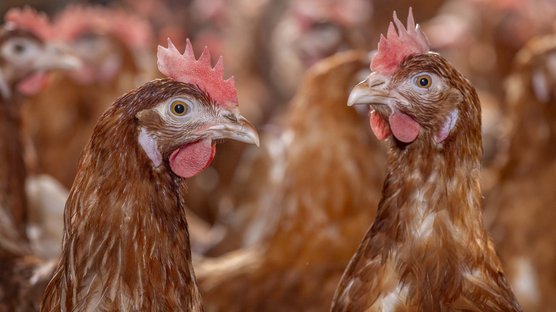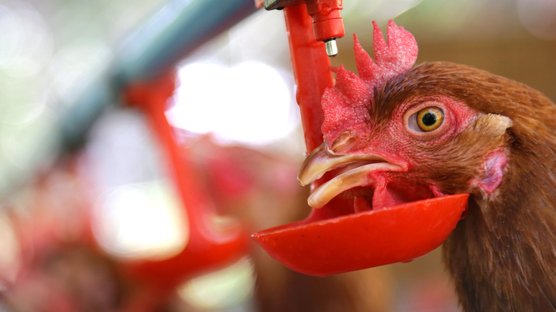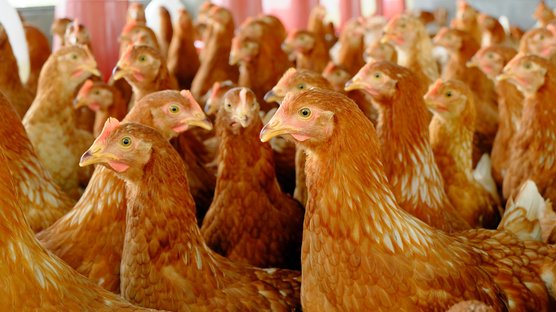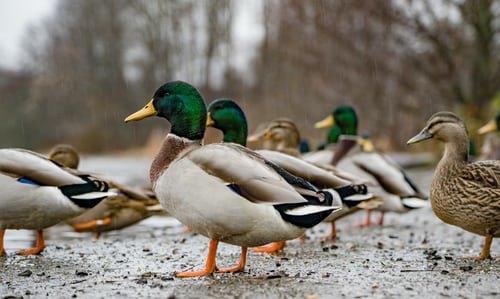
Published on Oct. 15, 2020
Avian Influenza in Poultry
Avian Influenza, also known as Fowl plaque, bird flu or grippe aviaire, is a disease caused by an Influenza A virus, member of the Orthomyxoviridae family. Avian Influenza viruses are classified into subtypes based on two surface proteins, the hemagglutinin (H1-H16) and the neuraminidase (N1-N9).
We talk about highly pathogenic avian influenza (HPAI) and low pathogenic avian influenza (LPAI) and about notifiable and non-notifiable avian influenza.
HPAI viruses have an intravenous pathogenicity index (IVPI) in six-week-old chickens greater than 1.2 or cause at least 75% mortality in 4 to 8-week-old chickens infected intravenously or have multiple basic amino acids at the cleavage site of the precursor haemagglutinin molecule.
Notifiable are all the H5 and H7 avian influenza subtypes and all other subtypes that are highly pathogenic.
"Wild waterfowl and other aquatic birds are thought to be the natural reservoir hosts. Migrating birds can spread the virus all over the world."
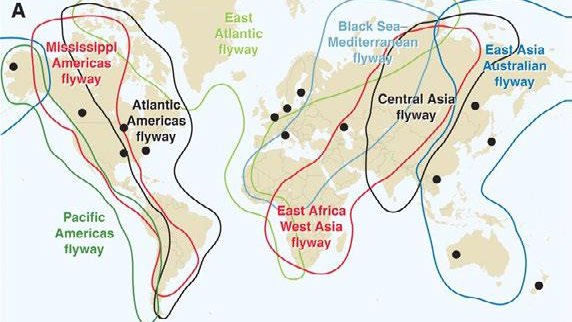
Clinical Signs
HPAI in chickens almost always causes severe illness with high morbidity and mortality. The whole flock is sick, the birds are lethargic, they don’t eat or drink and can show respiratory and/or neurological signs. Birds may die within a couple of hours. Oedema and cyanosis of the comb and wattles can be seen. HPAI in other birds can be asymptomatic, mild or severe.
LPAI normally does not cause severe clinical signs, mild respiratory signs and egg production drops are seen, but H9N2 and H3N1 (Belgium 2019) are for sure not harmless.

Oedema and cyanosis of the wattles
Diagnosis
The clinical and pathological signs are not pathognomonic but HPAI must always be part of your differential diagnosis when chickens show severe illness and high mortality.
HPAI is diagnosed with PCR and/or virus isolation.
Serological surveillance is done with agar gel precipitation (AGP) and Elisa, followed by hemagglutination inhibition (HAI) test for determining the H serotype.
Control & Vaccination
Avian influenza is a contact infection, biosecurity is key. You must prevent the introduction of the virus onto the farm and into the poultry houses. One gram of faeces is enough to infect a whole flock, especially in non-cage housing systems where both the farmer (boots) and the chickens have direct contact with the litter. Airborne infections over a short distance are also possible.
Governmental monitoring and control programs should manage the disease-free status of an area.
Vaccinations against notifiable avian influenza (NAI) are under discussion in NAI-free countries and are routinely used in countries where the disease has become enzootic (i.e. Mexico, Egypt, China).
Vaccinations against low pathogenic avian influenza are widely used in several areas.
References
- Picture of ducks: André Nadheim, Unsplash
- Diseases of Poultry 14th Edition. David E. Swayne, David L. Suarez and Leslie D. Sims.
- www.oie.int
- www.cfsph@iastate.edu

